Viruses constitute one of the most sophisticated pathogens known to man. They are entirely dependent upon the living host and have developed an intimate association with the host. One adaptation in particular needs mentioning here so that we can understand our rationale on how to combat this pathogen. The virus has a sensitive chemical communication system with the host. When the host is actively harvesting carbon and energy it is capable of producing many compounds used in its resistance response.
When these resistance compounds are in abundance in the host, the message sent to the virus is, “It’s dangerous to replicate,” as the host has armed itself with various ‘R’ compounds which can easily denature the protein coating of the virus particle. Thus, under these conditions, the virus goes into remission and goes dormant. Under health compromised conditions, however, the opposite message is relayed to the virus, “It’s safe to replicate”. The number of virus particles begin to increase, and are easily translocated to both nearby and distant tissues.
But, when nutritional programs are implemented which raise the rate and efficiency of an infected plant’s carbon energy harvest, we can (1) induce resistance expression, and (2) place the pathogen symptoms into remission and the pathogen into a state of quiescence or dormancy. Further, this virus disease remission example can serve as a model for various related disorders such as (a) Mycoplasma diseases, (b) systemic bacterial diseases, (c) Rickettsia diseases, (d) viroid diseases, and (e) others.
Plant viruses and their hosts have a complex, communicative relationship.
Obligate pathogens have developed an intimate relationship with the host over millions and millions of years. The level of communication that must exist for this host-pathogen relationship is nothing short of miraculous and precise. If it were not for this high degree of communication, the pathogen would perish. Further, were it not for the ability of the host to receive intricate communication from the pathogen, the host would suffer far more than it does.
In order to fully appreciate this delicate association, we need to again realize that it is indeed a case where the pathogen is an obligate pathogen, and as such its survival and extended well-being requires that the host is always kept at a minimal level of health. In other words, the pathogen would kill itself were it to kill the host. The successful pathogen that is actively metabolizing and reproducing in the compromised host I shall refer to the susceptible host as in a “Stage I Host Physiology,” and that of the pathogen as an obligate pathogen in a “Status A Metabolism.”
The intricate and precise communication of most interest to us deals with the host’s communication of its ability to mount a defensive response. A successful defense response is marked, for one, by the de novo production of numerous derivatives of phenolic compounds, typically produced by what is known as the Pentose Phosphate Pathway (PPP). Among the numerous compounds are those which have the ability to inactivate the growth and development of the pathogen. We shall refer to this heightened state of host physiology with the maximized expression of resistance to be in a “Stage II Physiology.”
Unless the pathogen is capable of detecting this sudden shift to alertness in the host’s biochemistry, it would expose itself by beginning to attempt growth and development, only to promptly be destroyed by the host’s immune response. However, having reached a point of time in evolution where the host-pathogen relationship is one in which both coexist, the pathogen, too, must have developed a means of detecting the presence of a dangerous environment, and then a methodology for shifting its physiology from active metabolism to one of inactivity, or quiescence. This quiescent state of the pathogen is referred to as “Status B Metabolism.”
In this state of quiescence, the pathogen adjusts its metabolism into a state of “no metabolism,” or an ametabolic state. In this ametabolic state, the pathogen is capable of appearing harmless to the otherwise toxic array of defense compounds. The pathogen escapes the throes of the defense response and will await a later moment in time when the defense response of the host is compromised. In a state of compromised health, the host does not mount a timely nor effective defense response. In such cases, the pathogen’s detection of this compromised health status induces resumed metabolic activities, including replication. This susceptible status of the host we shall refer to as “Stage I Physiology.”
Our goal is to help plants mount a defense response to infective pathogens.
When there is an expression of virus, the diseased plants have a “Stage I Host Physiology,” as well as a “Status A Metabolism.” In other words, the plant or tree is diseased, with active metabolism of the virus.
The goal of SunBurst Agri Biotech Solutions LLC, as with any grower with crops impacted by viral infection, is to achieve “Stage 2 Host Physiology,” with a quiescence of the pathogen. This means that the plant or tree is expressing resistance, and has arrested further symptoms while placing the pathogen into a state of non-metabolic quiescence. From here, the final goal is remission of the pathogen, which leads to total recovery.
At this point, the infected plant is expressing resistance to the pathogen, and has not only arrested the multiplication of the pathogens, but has taken charge and caused the mortality of the pathogen. Furthermore, the plant has regained its efficient physiological function and is operating at a very high level of metabolic efficiency. This scenario is the ultimate goal of the specialized programs designed by Sunburst for its clients.
Such programs developed by Sunburst have been especially effective in the total recovery of various species of plants from such serious—and often considered terminal—diseases as:
- Pierce’s disease of grapes
- Leaf scorch of almonds
- Tobacco mosaic virus of tomatoes
- Spotted wilt of peppers
- Alfalfa mosaic virus of alfalfa
- Prunus necrotic ringspot virus (PNRSV) of almonds
- PNRSV of Cherries
- Cucumber mosaic virus (CMV) of cucumbers
- CMV of melons
- And many more
If you would like assistance with identifying and effectively treating an infection that is damaging your crops, Sunburst PDC can help. For more information, call us at 866-762-8778, or send us a message using our site’s contact form.

